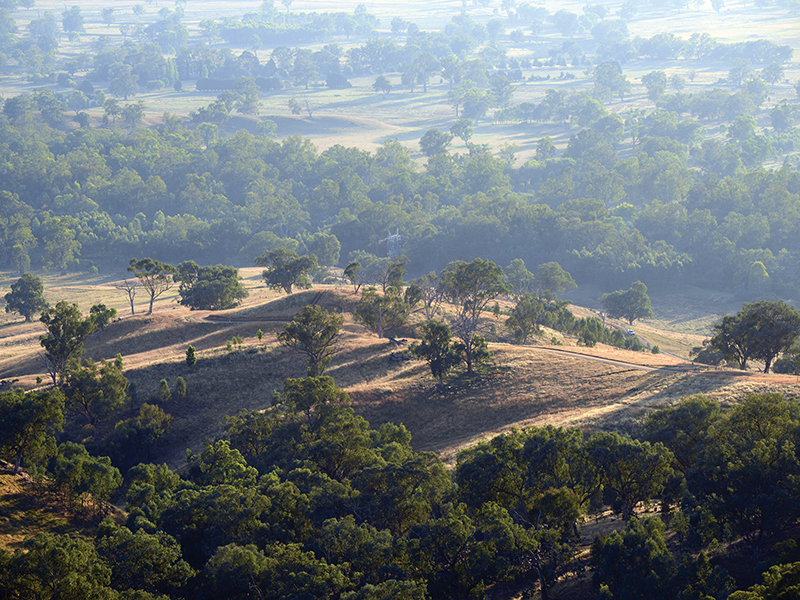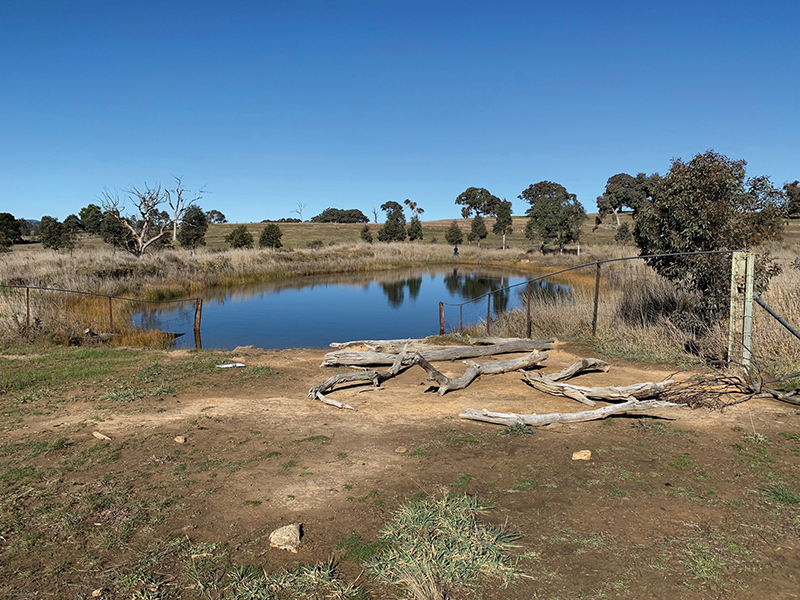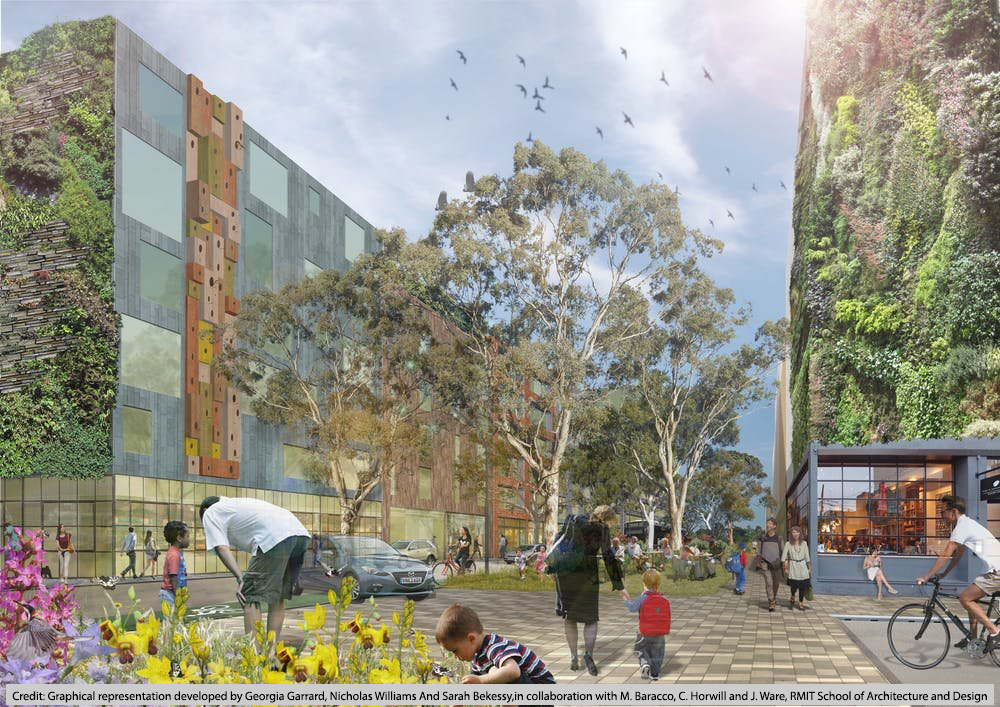
Ecosystem accounting in agricultural landscapes
Tuesday, 30 June 2020The box gum grassy woodlands once stretched across south-eastern Australia, but have been reduced to less than 5% of their former extent. Most of these woodlands now survive as small patches in agricultural landscapes, providing vital ecosystem services for both biodiversity and humans. Holly Vuong speaks with Ann Kristin Raymer and Heather Keith of The Australian National University (ANU) about their new research, part of ANU’s Sustainable Farms, on developing ecosystem accounts for the woodlands to understand why this threatened ecological community is so valuable. 
ANU field staff conducting a biodiversity survey on a pastoral property. Deploying sheet metal and railway sleepers aids the detection of reptiles and amphibians. Image: Alex Craig
The importance of woodlands in Australia’s agricultural landscapes
Before the arrival of European settlers, south-eastern Australia was home to rolling landscapes of box gum grassy woodland, supporting a mix of yellow box, white box, and Blakely’s red gum canopy trees, with shrubs, grasses and herbs in the understorey. This vegetation supported a plethora of birds, lizards, mammals and other wildlife. But historical land clearing for cropping and livestock led to the decline of this community. Coupled with processes such as intensive grazing, these changes have vastly reduced the extent of the woodlands and altered the ecosystem dramatically, leading to the loss of ecosystem condition and services. Environmental plantings and natural regeneration have the potential to restore ecosystem condition and services, but over a long time period.
These woodland remnants provide vital ecosystem services on farms, for example, improving water quality and water retention, minimising soil erosion, limiting flood damage, and boosting carbon storage. During periods of drought and hot weather, woodland patches also provide a refuge for wildlife. Recent research shows this is especially important in cooler, wetter areas, where local species rely on shaded refuges during hot, dry weather – shade that is also critical for farm animals. As Australia’s climate becomes hotter and drier, these woodland patches become increasingly important.
Creating incentives and opportunities that enable farmers to invest in woodland conservation and restoration is vital if we want to sustain agricultural production and conserve biodiversity. This requires mechanisms to quantify the extent, condition and value of woodland ecosystems to agricultural production as well as to broader human needs across the whole landscape. 
Black-eyed Susan. Image: Lorraine Oliver Flickr CC BY-SA 2.0
Accounting for our ecosystems
Ecosystem accounting provides a way to demonstrate how the environment is integral to our economy – both in the ecosystem services provided, and in the economic values they help deliver. Ecosystem accounts help show the range of values across a system and reveal the interactions between them. Using the globally recognised System of Environmental and Economic Accounting, these accounts will provide information that will help farmers, land-use planners, policy-makers, and agricultural investors make the decisions on how to balance environmental outcomes with the need for food production.
This research, conducted in partnership with The Australian National University’s Sustainable Farms, aims to show the economic contribution to agriculture from woodlands across the different types of land cover, land use and land tenure, and their interactions. These accounts will assess the extent and quality of remaining woodlands in terms of habitat for threatened species, and the ecosystem services related to climate regulation (e.g., carbon storage) and water supply. They will provide context for private landholders, natural resource managers, Landcare groups, communities and investors to better understand how retaining or restoring biodiversity can help support their goals, and when necessary make trade-offs between competing goals. Accounts for land cover and land use integrate a wide array of spatial and economic data from four states and territories.
Further investigation is aimed at distinguishing young regrowth and plantings from old growth remnant woodlands to help assess where gains and losses are occurring.
Protected native woodlands are important for carbon storage. Remnant woodlands with abundant large trees can store as much as 200 tonnes/ha while ecosystems with few large trees have limited carbon storage. Preliminary results on above-ground carbon from environmental plantings in the South West Slopes of New South Wales show an average of 43 tonnes/ha of stored carbon for plantings on ridges and upper slopes and 64 tonnes/ha on lower slopes and flats, where more water is available. Carbon stored in root systems and soils would add further to these estimates. 
Woodlands, Tooled Creek. Image: Threatened Species Recovery Hub
How accounts can make for better business
Growing numbers of individual farm enterprises are integrating woodland conservation and vegetation restoration into their farming practices.
Ecosystem accounting can help quantify how these changes are contributing economically across whole landscapes. These accounts could help guide regulations and incentive schemes within policy and industry bodies, and inform how investors, banks and insurance companies direct their investments.
For example, current investment tools frequently exclude areas of retained vegetation when estimating the value of properties. Ecosystem accounts can help demonstrate how areas of woodland function as landscape assets, boosting the resilience of ecosystem processes to farm businesses.
Investors and financial institutions increasingly look to natural capital accounting to inform investment decisions, loan conditions, and insurance calculators. Ecosystem accounts can play a vital role in ensuring these decisions better reflect the biodiversity and the essential ecosystem services provided by woodlands.
For further information
Heather Keith - Heather.Keith@anu.edu.au
Ann Kristin Raymer - AnnKristin.Raymer@anu.edu.au
Top image: Box gum grassy woodlands at Huon Hill in Wodonga, Victoria. Image: David Blair



